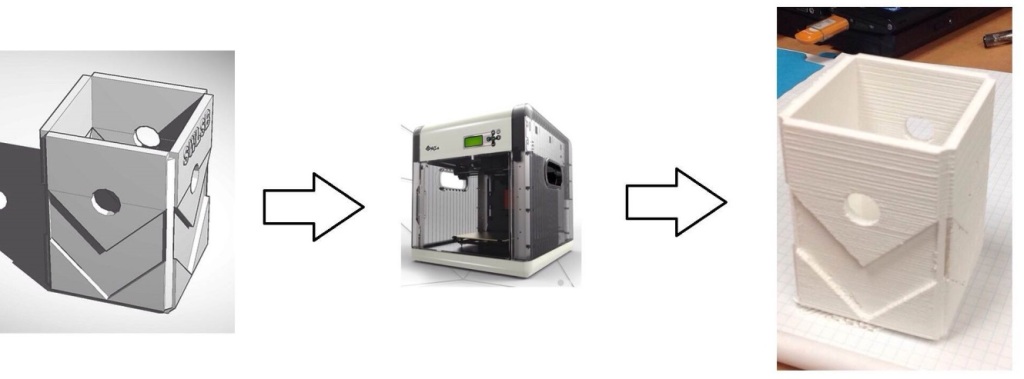Sir Wilfrid Laurier School Board, in the Province of Québec, is bringing 3D printing curriculum to its students in Joliette Secondary School. The school board’s AEVT department recently submitted a grant proposal for the purchase of a 3D printer in support of its Work Oriented Training Path (WOTP) program. WOTP is intended to help students study building structures and forms and expose them to engineering and architectural concepts. The grant was approved with the hopes that it would strengthen the Province’s Vocational Technology initiatives in the community. The school established a 3D printing curriculum with the purpose of connecting WOTP subjects with technological and scientific experimentation and preparation for the job market.
Students that engage in these exploration activities get involved in modeling and printing architectural forms. A curriculum built around 3D printing is set to stimulate their interest in building trades and encourage perseverance in those areas. The school’s curriculum, referred to as MAKING, is simple but very effective in achieving success in STEM education.
MAKING a 3D Object: Joliette’s 3D Printing Curriculum
Step 1 – Design/Modelling
Drawing digitally can be done using a variety of different software solutions. Many drafting and engineering professionals and students rely on SolidWorks for its intuitive, 3D modelling interface. SolidWorks’ designs can also be saved and exported in STL format. STereoLithography (STL) file format has become the industry standard when it comes to 3D printing. It is often used for rapid prototyping and computer-aided manufacturing. STL files refer only to the surface geometry of a three-dimensional object. They do not account for any representation of color, texture or other common CAD model attributes.
Step 2 – 3D Printing
Following the creation of the STL file in SolidWorks, students are responsible for sending the data to the 3D printer. The Sir Wilfrid Laurier School Board purchased a da Vinci 1.0 3D printer because of its user friendly interface. The printer will guide the user to adjust the print density of the object(s), once it has received the model data. The default print setting on the da Vinci 1.0 printer will create the internal structure of the object based on honeycomb structures. The printer will also provide supportive structures according to the object features. These printed supports are used to structural strength and ensure that the model does not collapse during the printing process (Figure 2).
Step 3 – Raft Removal
Printing thinner and longer objects requires more attention due to the shapes’ physical instability. Rafts create stability and can be removed after the object has been printed. Sometimes, the printer will use more filament for the rafts than for the actual object being printed (Figure 3).
The Academic Outcome
The Pedagogical Consultant for Sir Wilfrid Laurier School Board, Tami Belhadj, stated, “For high school students, project based instructional strategy is favored as a deeper learning approach. 3D printers open new possibilities for learning, promotes problem solving skills and most importantly creates excitement.” He goes on to suggest that a worthwhile challenge for students pursuing building trades, is to ask them print one of Blanciak’s 1001 Building Forms. There are many STEM education resources that provide educators with similar activities to fit their respective subjects.
Take advantage of your academic status as a faculty member or a student, and get your hands on a 3D printer and CAD software at academic prices. Achieve hands-on learning and explore design concepts in an academic environment that will prepare you, or your classroom full of students, for career success.
Share this Post



